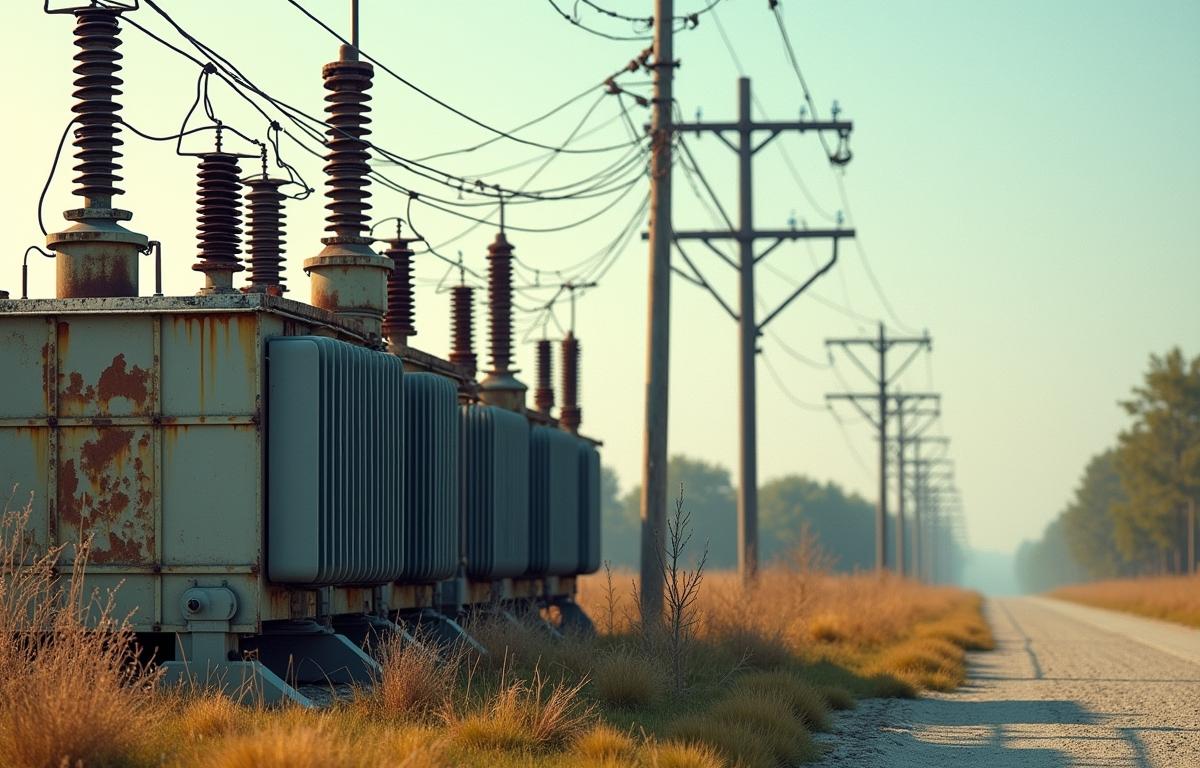Many communities face challenges with reliable electricity due to infrastructure aging. Every year, we see more reports of outages tied to dated power lines, worn-out transformers, and crumbling substations. This strain on the grid impacts everyone from families who lose refrigeration to businesses that suffer huge financial losses. It’s a call to reassess the condition of older facilities and explore how they relate to the frequency and intensity of modern power failures.
Many people never think about how often their local power systems get maintained. Aging structures can do just fine for years but tend to fail without consistent upkeep. Harsh weather, increased demand, and simple wear and tear all play a role. Proactive maintenance might prevent breakdowns, but many utility providers struggle to keep up with growing infrastructure demands.
Contents
Why Aging Facilities Contribute To Power Interruptions
When equipment ages, everything from the wiring to the transformers becomes more prone to faults. Older lines may have damaged insulation that leads to dangerous arcing or outages at the slightest disturbance. These sorts of hiccups can ripple through entire neighborhoods or even regions, resulting in days of darkness or rolling blackouts. It becomes an even bigger problem under extreme heat or cold, when energy usage spikes.
Age is also about design limitations. Some older systems were never planned to handle the high consumption we see today. Regions that grew suddenly may have far more homes and businesses drawing power than in decades past. Upgrading these systems can be slow and costly, which increases the chance of ongoing failures.
The Strain Of Increased Demand
Communities today rely on a wider array of electronic devices, from personal gadgets to electric vehicles. This spike in demand stresses distribution networks that were built for fewer households and less technology. Substations from past generations might be undersized for modern usage patterns. That mismatch can heighten the risk of equipment overheating or failing in periods of peak consumption.
Lack of timely updates can create a situation where small issues escalate into large-scale interruptions. Worn parts might handle incremental demands until a specific event causes total collapse. In many neighborhoods, even moderate temperature swings push old systems past their thresholds. Coordinated efforts to replace or reinforce these networks are essential to prevent repeated blackouts.
Challenges In Upgrading Outdated Equipment
Bringing the power grid into this century requires more than just installing fresh transformers or new cables. It demands planning, regulatory approvals, skilled labor, and public support. Some regions have robust plans for replacing fragile infrastructure, while others remain behind schedule because of limited resources.
Upgrades help utility providers integrate more efficient technologies. Modern substations, for instance, often have advanced monitoring features. This can pinpoint areas needing repairs before they cause major outages. However, getting such projects off the ground is rarely straightforward. Delays may involve funding constraints, public debates over expansions, or environmental regulations that slow the process.
Financial Constraints And Budgetary Gaps
Maintenance and replacement projects can be expensive, especially in dense urban zones with complex wiring systems. Cash-strapped municipalities might prefer short-term fixes rather than large-scale transformations. The result can be a cycle where small repairs keep systems running until a major failure triggers massive, unplanned expenses.
Utilities aim to perform maintenance on a schedule, but budgets often stretch thin. Sometimes government grants help, but they might be earmarked for other priorities, leaving outdated infrastructure in limbo. Oversight agencies try to ensure safe operations, yet their guidelines can only go so far if the funding simply isn’t available.
Safety Concerns And Regulatory Hurdles
Government bodies and private operators often have to collaborate to keep power systems up to code. If these stakeholders disagree on how to interpret new regulations, delays in repairs or replacements can occur. Safety inspections reveal vulnerabilities, but addressing them thoroughly might involve tearing up streets and scheduling power shutdowns.
The public also plays a role. Few people want disruptive construction near their homes or workplaces, yet that may be vital to replace old lines. Balancing modern convenience with safety obligations becomes a delicate dance, especially when budgets come into play. The regulatory framework might also differ across states or provinces, leading to inconsistent progress.
Mitigating The Effects Of Deteriorating Structures
It might seem daunting to reverse decades of gradual decline. Still, many utilities take measures to at least manage the worst outcomes of power failures. They track assets in real time, often using remote sensors on lines and transformers. If a particular brand or model of equipment shows signs of repeated failure, providers can prepare backups or expedite replacements.
Proactive planning can include forming alliances for emergency repair forces. After big storms, crews from neighboring regions might join to help restore power quickly. Despite the inherent challenges of older infrastructure, careful coordination reduces the duration of outages. This not only benefits residents but also critical sectors like healthcare and public transportation.
Enhanced Monitoring With Digital Tools
One modern approach is using digital platforms that allow immediate visibility into system performance. When a sensor alerts operators about unusual voltage drops, the repair team can target the fault before it cascades through the grid. This approach can reduce operational costs over time because it prevents catastrophic breakdowns.
Data analytics further refine these strategies by predicting how certain lines or transformers will behave under stress. Historical patterns combined with real-time updates allow utilities to prioritize upgrades on the most vulnerable assets. Over time, consistent data tracking builds a clearer understanding of exactly where to allocate resources.
Long-Term Strategies For Modernizing Power Systems
Short-term fixes keep systems running, but deeper efforts remain vital to reduce major blackouts. Some regions encourage investments in renewable energy generation and microgrids as part of their solution. When smaller, localized grids take on part of the load, they can minimize strain on older lines. This distributes power more flexibly and keeps certain neighborhoods lit, even if the main grid goes down.
Aside from generation, governments and utilities can collaborate on large-scale retrofits. Replacing transmission lines with higher capacity ones ensures that more current can flow without overheating. Shifting from manual system controls to automated ones also helps operators react more quickly to anomalies. These improvements might cost more upfront but offer considerable long-term value in fewer outages and lower maintenance bills.
Modernizing might include burying lines underground. Though expensive, underground cables resist weather damage and reduce the chance of accidental contact. Power failures linked to strong winds or icy conditions become less frequent. This sort of solution pairs well with improved design, ensuring the grid can adapt to new population hubs or evolving businesses.
Sustaining Momentum Through Accountability
Ongoing projects have the best chance when there is clear accountability among stakeholders. Utility companies, regulators, and local governments should agree on timelines and goals. Transparency in planning helps residents see where their money is going and how it benefits them down the road. That buy-in can make it easier to implement changes that require higher rates or taxes.
Watchdog groups also help sustain momentum. They monitor how effectively funds get spent and whether the promised results align with reality. If upgrades stay behind schedule, the public can ask for explanations or demand faster action. Clear reporting leads to stronger trust, creating a positive cycle where additional improvements become more feasible.
The Role Of Emerging Grid Innovations
Technological breakthroughs might hold the key to bridging the gap between aging assets and reliable service. Robotics can inspect lines in remote or hazardous areas, minimizing risk to human crews. Automated fault detection allows for swift isolation of troubled segments, preventing widespread disruption. These tools help old networks operate more efficiently, extending their service life until a thorough upgrade can be completed.
Cybersecurity also merges with physical upgrades. As more power systems go online for remote management, they become potential targets for cyber threats. Securing digital assets is just as crucial as modernizing the physical grid. A single vulnerability in software can undermine even the most hardened pieces of hardware.
Encouraging Tomorrow’s Workforce
At the heart of every modernization effort are skilled workers. Electricians, engineers, and interdisciplinary teams shape how quickly repairs and upgrades happen. Investing in specialized training programs ensures that enough talent is available to address escalations in the field. Younger professionals bring fresh ideas, while veteran workers share practical insights from decades of experience.
Education in schools can spark an interest in future careers that focus on power systems. Public awareness campaigns also show people what it takes to keep the lights on. By drawing more individuals to these jobs, we can ensure that a pipeline of knowledgeable experts will be ready to maintain both new and old infrastructure.
Coordinated Action To Reduce Power Failures
When communities, regulators, and utility providers share a clear vision for reliable power, they can devise strategies that address both immediate and long-term vulnerabilities. Officials can streamline approvals for modernization projects, while utility companies stay on to meet scheduled upgrades. Public awareness campaigns remind people of the benefits of supporting these initiatives, even if they cause minor inconveniences.
Reliability is about more than convenience. A sustained blackout can damage a region’s economy and place lives at risk. By investing in advanced monitoring, allocating sufficient budgets, and planning effectively, communities can reposition these aging systems to handle growing demand. The process is neither quick nor simple, but consistent effort pays dividends in resilience and safety.
Planning For Future Resilience
Better grid reliability requires a mix of practical steps and visionary thinking. Regular inspections, newly developed technologies, and collaboration across various agencies elevate the conversation beyond just stopgap solutions. Strategies that consider everything from peak usage to climate impacts help shape a robust blueprint for tomorrow’s power landscape.
Community leaders and energy experts often share success stories involving smaller pilot programs that tested advanced equipment before large-scale deployments. With each successful trial, confidence grows that aging networks can transform. Step by step, investments in more durable hardware and improved digital infrastructure help reduce blackouts across diverse regions.
Through steady modernization, old equipment can either retire gracefully or adapt to the latest standards, ensuring that communities remain lit, comfortable, and productive.





